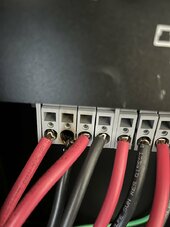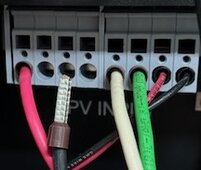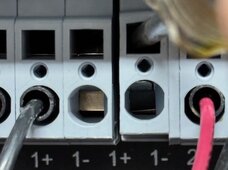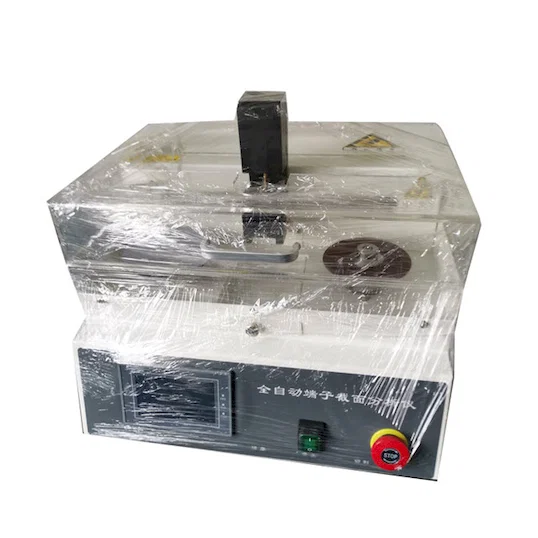Jsands
New Member
Good day to you all,
I have an EG4 18kPV inverter. It has been up and running for about 2 months and as far as I could tell there were no issues. System was designed by and purchased from Signature Solar (which were great to work with by the way).
I had the system installed by a local Solar company.
2 days ago, I noticed my solar production dropped by 25%. I opened the inverter door and the source of the problem was very apparent (see picture) - the 1st MTPP was fried.
the 10g PV wire was black/burnt too, going pretty far back on the wire itself.
MTPP #1A was the one that got cooked. #1B and #2 and #3 MTPP's were all working fine - hence the drop in 25% of my solar production.
my PV input array is as follows:
I have 36 Solorever 455W/49V panels. They are divided into four groups of 9 panels each (max wattage 4095 per grouping, 441V per grouping)
for the three MTPP inputs:
#1A (9 panels)
#1B (9 panels)
#2 (9 panels)
#3 (9 panels)
Has anyone ever seen this? Any ideas what could have caused this? Anyone every had to buy parts from SS/EG4 - as I will need to get new MTPP plug in ports.
I'm grateful for any input/suggestions/advice.
I have an EG4 18kPV inverter. It has been up and running for about 2 months and as far as I could tell there were no issues. System was designed by and purchased from Signature Solar (which were great to work with by the way).
I had the system installed by a local Solar company.
2 days ago, I noticed my solar production dropped by 25%. I opened the inverter door and the source of the problem was very apparent (see picture) - the 1st MTPP was fried.
the 10g PV wire was black/burnt too, going pretty far back on the wire itself.
MTPP #1A was the one that got cooked. #1B and #2 and #3 MTPP's were all working fine - hence the drop in 25% of my solar production.
my PV input array is as follows:
I have 36 Solorever 455W/49V panels. They are divided into four groups of 9 panels each (max wattage 4095 per grouping, 441V per grouping)
for the three MTPP inputs:
#1A (9 panels)
#1B (9 panels)
#2 (9 panels)
#3 (9 panels)
Has anyone ever seen this? Any ideas what could have caused this? Anyone every had to buy parts from SS/EG4 - as I will need to get new MTPP plug in ports.
I'm grateful for any input/suggestions/advice.












